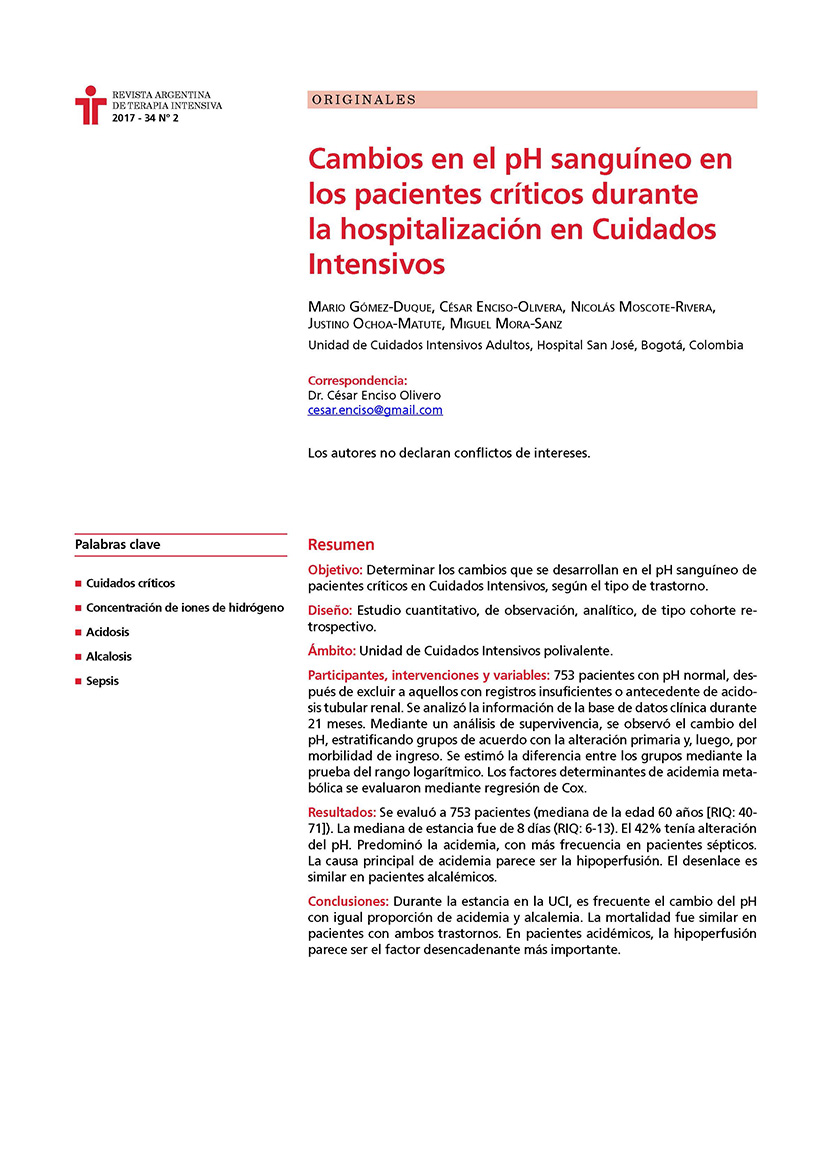Resumen
RESUMEN
Objetivo
Determinar los cambios que se desarrollan en el pH sanguíneo de pacientes críticos en cuidados intensivos, estratificando por cada tipo de trastorno.
Diseño, ámbito, participantes, intervenciones y variables
Estudio cuantitativo, observacional, analítico, tipo cohorte retrospectivo, en una unidad de cuidados intensivos (UCI) polivalente. Ingresaron 753 pacientes con pH normal, después de excluir quienes tenían registros insuficientes o antecedente de acidosis tubular renal. Se analizó la información de la base de datos clínica durante 21 meses. Mediante un análisis de sobrevida se observó el cambio del pH, estratificando grupos de acuerdo a la alteración primaria, siguiendo la teoría de Stewart y luego por morbilidad de ingreso. Se estimó diferencia entre los grupos mediante el logaritmo del rango del intervalo. Los factores determinantes de acidemia metabólica se evaluaron por medio de regresión de Cox.
Resultados
753 pacientes con una mediana para la edad de 60 años (RIQ: 40-71), mediana de estancia de 8 días (RIQ: 6-13), con alteración del pH en 42 %, que aparece en el tercer día. Predominó la acidemia, con mayor frecuencia en pacientes sépticos. La causa principal de acidemia parece ser la hipoperfusión. En pacientes alcalémicos el desenlace es similar al de pacientes acidémicos.
Conclusión
Durante la estancia en UCI es frecuente el cambio del pH con igual proporción de acidemia y alcalemia. La mortalidad fue similar en ambos trastornos. En acidémicos, la hipoperfusión parece ser el factor desencadenante de mayor importancia.
La revista no retiene los derechos de reproducción (copyright) por lo que los autores pueden volver a publicar sus trabajos con la sola mención a la fuente original de publicación.

